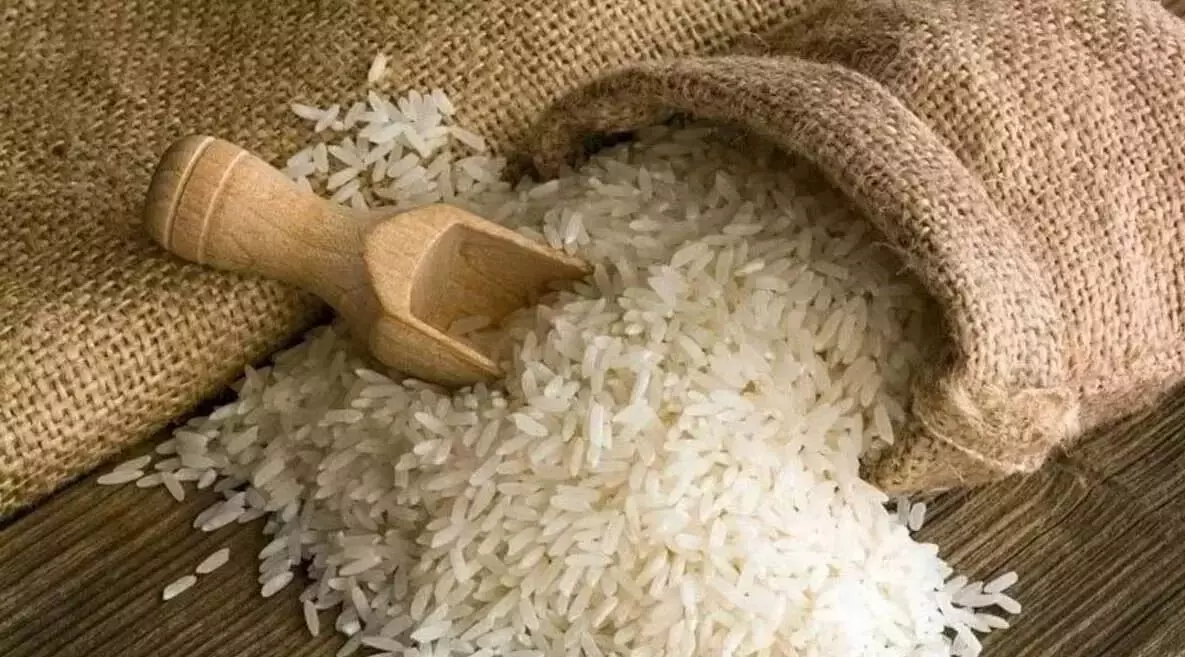Food for thought: Unsaturated fatty acids in Assam’s Joha rice can help manage diabetes
Joha is a short-grain winter paddy known for its significant aroma and noteworthy taste, superfine kernel, good cooking qualities and excellent palatability.
By Sulogna Mehta
Representational Image.
Hyderabad: Often diabetic patients are advised against eating too much rice, but how about a type of rice that is effective in lowering blood glucose and preventing the onset of diabetes?
Surprised? Joha rice, a type of aromatic rice from Assam can be a blessing for diabetic patients, as shown by researchers.
According to a recent release from the Ministry of Science and Technology, Joha rice cultivated in the Northeastern region of India is effective in lowering blood glucose and preventing diabetes onset and hence is an effective nutraceutical of choice in diabetes management.
Joha is a short-grain winter paddy known for its significant aroma and noteworthy taste, superfine kernel, good cooking qualities and excellent palatability. The traditional claims are that the consumers of Joha rice have low incidence of diabetes and cardiovascular diseases but the claims are yet to receive complete scientific validation.
Research on rice for diabetes management
Towards scientific validation, scientists at the Institute of Advanced Study in Science and Technology (IASST), an autonomous institute of the Department of Science and Technology explored the nutraceutical properties of aromatic Joha rice. Joha rice is an intermediate of typical Indica and Japonica classes. It belongs to the medium slender or medium broad category with an L:B (length: breadth ratio) less than 3.
Scientists, Rajlakshmi Devi along with Paramita Choudhury, in their research explored the nutraceutical properties of aromatic Joha rice. Through in vitro laboratory analysis, they detected two unsaturated fatty acids viz., linoleic acid (omega-6) and linolenic (omega-3) acid. These essential fatty acids (which humans cannot produce) can help maintain various physiological conditions. Omega-3 fatty acid prevents several metabolic diseases such as diabetes, cardiovascular diseases, and cancer. Joha has also proved to be effective in lowering the blood glucose and preventing diabetes onset in diabetic rats.
Rich in omega-3 and omega-6
The researchers also found that scented Joha rice has a more balanced ratio of omega-6 to omega-3 in comparison to the widely consumed non-scented variety. The ratio of omega-6 to omega-3 essential fatty acids (EFA) required by human beings for maintaining a proper diet is around one. They have used this Joha rice to make rice bran oil, a patented product that they claim to be effective in diabetes management.
Rich in antioxidants and bioactive components
Besides, Joha rice is also rich in several antioxidants, flavonoids, and phenolics. Some of the reported bioactive compounds are oryzanol, ferulic acid, tocotrienol, caffeic acid, catechuic acid, gallic acid, tricin, and so on, each with reported antioxidant, hypoglycaemic and cardio-protective effects.
Protein of Joha Rice
The crude protein content of Joha grains has a good range (9.17-11.67%) in comparison with Basmati and Kasturi rice varieties. The local Joha rice varieties are nutritionally comparable to Basmati and Kasturi in higher content of albumin, globulin and amylase. High levels of albumin and globulin in scented rice can play an important role in protein digestibility and also increase biological value. On average, the different Joha rice cultivars of North East India have albumin: globulin: prolamin: glutelin ratio of 11:1:6:70. Among all, Kola Joha, Badshabhog and Keteki Joha have a strong aroma.
The challenges
Joha rice is grown in marginal lands, uplands or on Sali seed beds after uprooting the seedlings, late in the season. The area under Joha rice cultivation is however nominal owing to its poor yielding ability. The low productivity and yield of this class of rice make it less favourable among the producers. Moreover, due to its aroma, pest attack is frequent, prone to lodging and takes a relatively longer time to mature (120-160 days).
However, now Assam Agriculture University has initiated activities in collecting, maintaining and characterizing Joha cultivars for subsequent improvement and production of this class of rice.